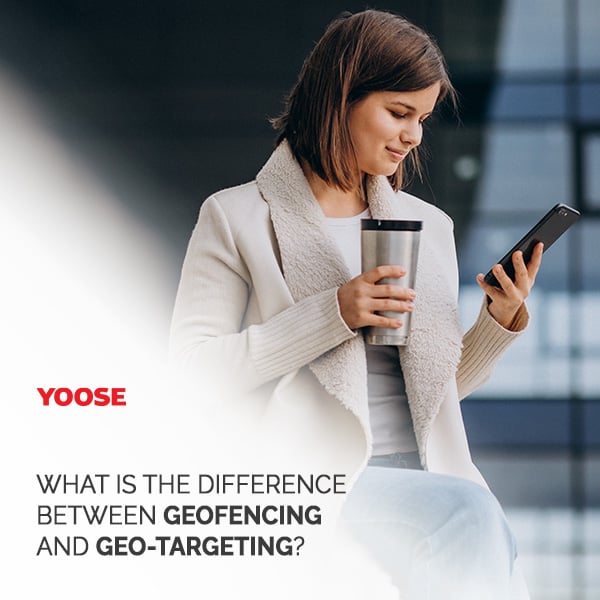A Complete Guide of Geofence Marketing
Geofencing marketing is a powerful way to target and engage potential customers based on their location. In this article, you will learn what geofencing marketing is, how it works, what are its benefits and challenges, and how to create a successful geofencing marketing campaign. You will also discover the difference between geofencing and geo-targeting, and see a case study of how Mazda Austria used geofencing to increase store visits for their CX-5 model. Whether you are a business owner, a marketer, or just curious about this innovative marketing strategy, this article will provide you with a complete guide of geofencing marketing.
What is geofencing marketing?
Geofencing marketing is a location-based digital marketing strategy that uses geographic boundaries, or "geofences," to target and deliver personalized ads or messages to potential customers within a specific area. This method leverages GPS, Wi-Fi, Bluetooth or radio frequency identification (RFID) technology to create virtual boundaries around a physical location, such as a store, event venue, or any other point of interest.
When users with smartphones or other devices enter the defined geofence, they can receive targeted ads, notifications, or promotions related to the nearby business or event. These messages can be delivered through various channels, such as mobile apps, social media platforms, or search engines.
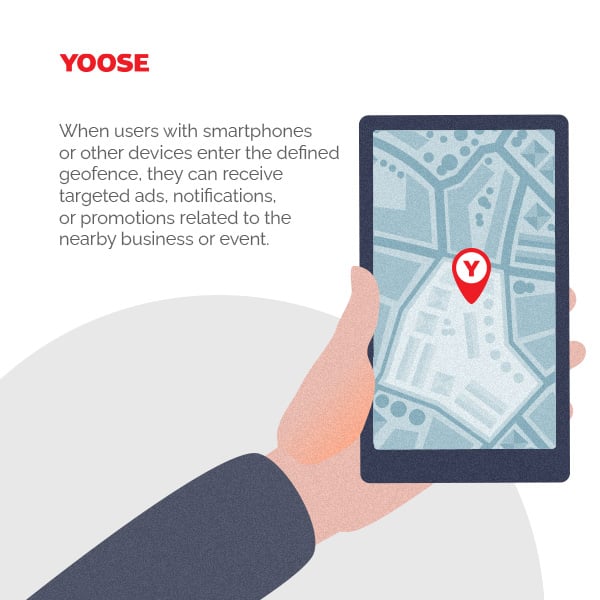
Geofencing marketing allows businesses to engage with potential customers in real-time, based on their proximity to the store or event. This targeted approach can lead to increased foot traffic, brand awareness, and sales, as it captures the attention of consumers who are already in the vicinity and more likely to be interested in the products or services offered.
How does geofencing marketing work?
Here's a step-by-step explanation of how geofencing works:
-
Define the geofence: First, a business or marketer creates a virtual boundary around a particular location, like a store, event venue, or any point of interest. This geofence can be a radius around a set of coordinates or a custom shape based on specific geographic points.
-
Choose the technology: Geofencing marketing relies on GPS, Wi-Fi, or RFID technology to track users' locations and determine when they enter or exit the geofence.
-
Develop content and channels: Businesses create tailored marketing content, such as ads, promotions, or notifications, to engage with users within the geofence. They also choose the channels through which they will deliver these messages, such as mobile apps, social media platforms, or search engines.
-
Trigger the messages: When a user with a smartphone or other connected device enters the geofenced area, their location is detected by the chosen technology. As a result, the targeted marketing content is delivered to them via the selected channels.
-
Monitor and analyze results: Businesses track user engagement, such as clicks, app downloads, or in-store visits, to measure the effectiveness of their geofencing marketing campaigns. They can then analyze the data to improve their strategies and further optimize their marketing efforts.
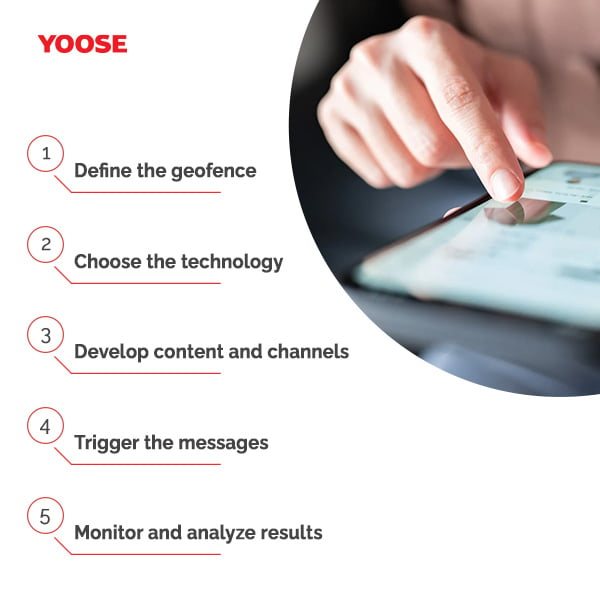
What are the benefits of geofencing marketing?
Geofencing marketing offers various benefits to businesses, helping them effectively target potential customers and enhance their marketing efforts. Some key advantages include:
-
Precise targeting: Geofencing allows businesses to focus their marketing efforts on a specific geographic area, reaching potential customers who are already nearby and more likely to be interested in their products or services.
-
Real-time engagement: By sending tailored ads, promotions, or notifications to users as they enter the geofenced area, businesses can engage with them in real-time, increasing the chances of capturing their attention and driving action.
-
Personalized content: Geofencing marketing enables businesses to deliver customized content based on the user's location, making the advertising more relevant and engaging for the target audience.
-
Improved analytics: Geofencing provides valuable data on user behavior, such as foot traffic, dwell time, and engagement with marketing messages. Businesses can use this information to refine their marketing strategies and optimize their campaigns for better results.
-
Increased foot traffic and sales: By targeting potential customers who are already in the vicinity, geofencing marketing can help drive more foot traffic to physical stores, boosting brand awareness and potentially increasing local sales.
-
Cost-effective marketing: Geofencing marketing can be more cost-effective than traditional advertising methods, as it focuses on a specific audience within a defined area, reducing wasted ad spend on uninterested or unreachable consumers.
-
Enhanced customer insights: By collecting data on users within the geofenced area, businesses can gain a better understanding of their target audience's demographics, preferences, and behaviors, allowing for more informed marketing decisions and improved customer experiences.
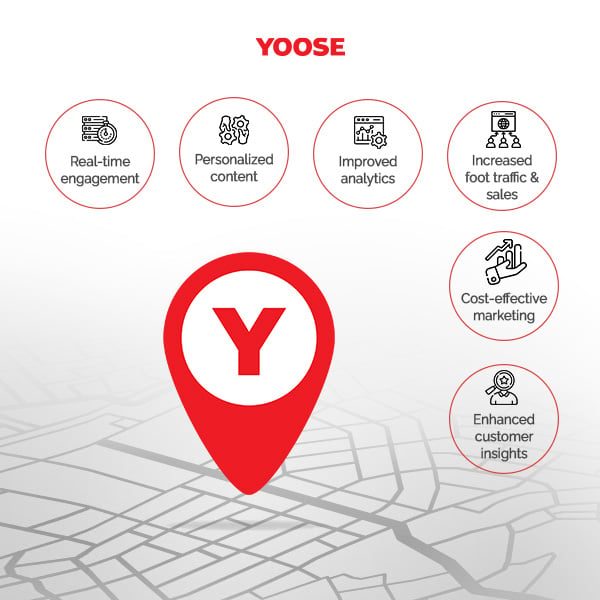
Overall, geofencing marketing offers a targeted, personalized, and data-driven approach to advertising, helping businesses attract and engage with potential customers while optimizing their marketing efforts for maximum impact.
What are the challenges of geofencing marketing?
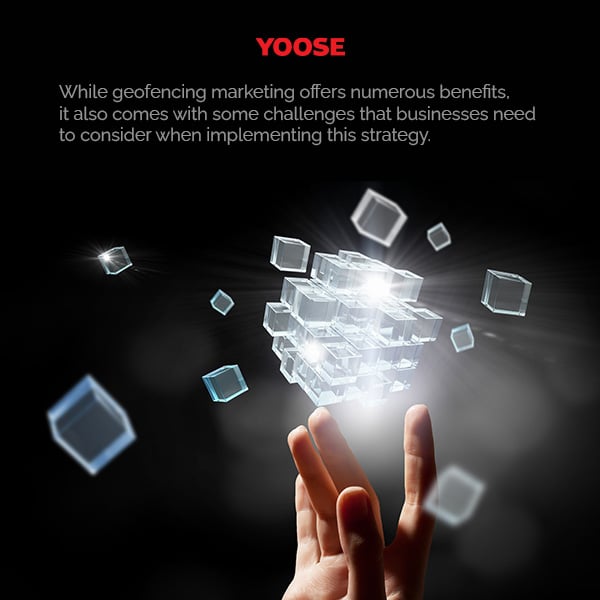
While geofencing marketing offers numerous benefits, it also comes with some challenges that businesses need to consider when implementing this strategy. Some of these challenges include:
-
Privacy concerns: Geofencing marketing relies on collecting and processing location data from users, which can raise privacy concerns. Ensuring compliance with data protection regulations, such as GDPR or CCPA, and maintaining transparency with users about data collection and usage are essential.
-
Opt-in requirements: Many geofencing marketing tactics, such as push notifications or locationbased promotions, require users to opt-in by enabling location services or downloading an app. Convincing users to opt-in can be challenging, as they may be hesitant to share their location or download additional apps.
-
Technical limitations: Geofencing accuracy depends on the technology used, such as GPS, Wi-Fi, or RFID. Factors like signal strength, device compatibility, and location accuracy can impact the effectiveness of a geofencing marketing campaign.
-
Ad relevance and timing: Ensuring the marketing content is relevant and timely for users within the geofence is crucial for success. Poorly targeted or ill-timed messages can lead to negative user experiences and reduced effectiveness.
-
High competition: In areas with multiple businesses using geofencing marketing, competition for users' attention can be fierce. Standing out from the crowd and offering value to potential customers becomes increasingly important.
-
Cost considerations: Although geofencing marketing can be more cost-effective than traditional advertising, it still requires investment in technology, content creation, and campaign management. Balancing the budget while maintaining campaign effectiveness is crucial.
-
Measuring ROI: Tracking the return on investment (ROI) of a geofencing marketing campaign can be challenging due to various factors influencing user behavior, such as external promotions or weather conditions. Accurate tracking and analysis of campaign performance are necessary for optimization and evaluating success.
By understanding and addressing these challenges, businesses can implement geofencing marketing more effectively, maximizing the potential benefits while minimizing potential risks.
How can you create a successful geofencing marketing campaign?
Here are some marketing tips to follow:
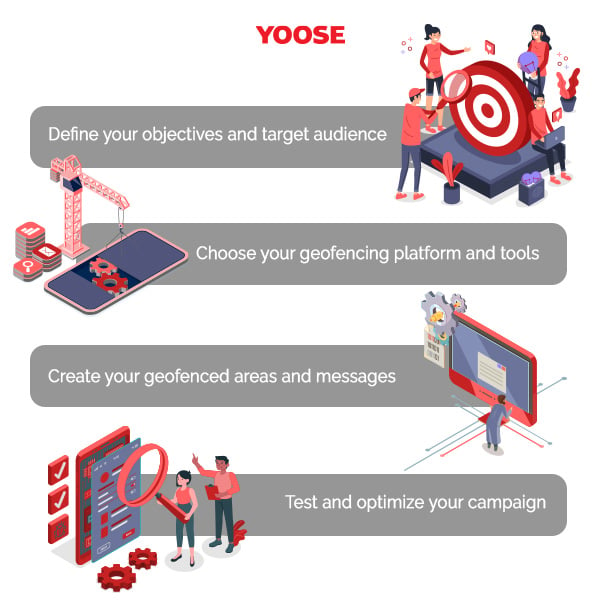
-
Define your objectives and target audience. Before you start geofencing, you need to have a clear idea of what you want to achieve and who you want to reach. What are your specific goals and key performance indicators (KPIs)? Who are your ideal customers and what are their needs, preferences, and pain points?
-
Choose your geofencing platform and tools. There are many options available for geofencing marketing, such as Google Ads, Facebook Ads, or dedicated geofencing apps. You need to select the one that suits your budget, objectives, and target audience. You also need to ensure that your platform and tools are compatible with your website, app, and CRM system.
-
Create your geofenced areas and messages. The next step is to define your geofenced areas and craft your messages. You need to consider the size, shape, and location of your geofenced areas, as well as the timing and frequency of your messages. You also need to make sure that your messages are relevant, engaging, and compelling for your target audience. Use the AIDA model to guide your message creation: Attention (grab the user's attention with a catchy headline or an eye-catching image), Interest (spark the user's interest with a unique value proposition or a benefit statement), Desire (create the user's desire with social proof or scarcity), and Action (prompt the user to take action with a clear call-to-action or an irresistible offer).
-
Test and optimize your campaign. Once you launch your geofencing marketing campaign, you need to monitor its performance and analyze its results. You need to track metrics such as impressions, clicks, conversions, revenue, ROI, etc. You also need to test different variables such as geofenced areas, messages, offers, etc. to find out what works best for your audience and objectives. You need to optimize your campaign based on your findings and feedback.
What is the difference between geofencing and geo-targeting?
Scope and precision:
Geofencing involves creating virtual boundaries or "fences" around a specific geographic location, like a store, event venue, or any point of interest. When a user with a connected device enters the geofenced area, they receive targeted marketing content in real-time. Geofencing is highly precise and focuses on reaching users who are physically within or very close to the
defined boundaries.
Geo-targeting, on the other hand, is a broader approach that targets potential customers based on their geographic location, such as a city, state, or country. This method involves segmenting audiences by location and delivering tailored marketing messages or content based on regional factors, such as local preferences, demographics, or language.
User engagement:
Geofencing typically engages users in real-time as they enter or move within the defined boundaries, offering immediate and location-specific promotions, notifications, or ads. This can create a sense of urgency and drive immediate action, such as visiting a nearby store or attending an event.
Geo-targeting focuses on reaching users within a broader geographic area and is not tied to realtime user movement. Marketing messages delivered through geo-targeting can be more general, catering to the preferences or needs of people living in a particular region, but may not create the same sense of urgency as geofencing.
Technology used:
Geofencing primarily relies on GPS, Wi-Fi, or RFID technology to track users' locations and determine when they enter or exit the geofence.
Geo-targeting typically uses IP addresses, device location settings, or other less precise location data to identify users within a broader geographic area.
In summary, geofencing is a highly precise and real-time location-based marketing strategy that targets users within a specific virtual boundary, while geo-targeting is a broader approach that targets users within a larger geographic area based on regional factors or preferences. Both strategies have their unique advantages and can be used separately or in combination, depending on a business's marketing goals and target audience.
The case study of geofencing advertising
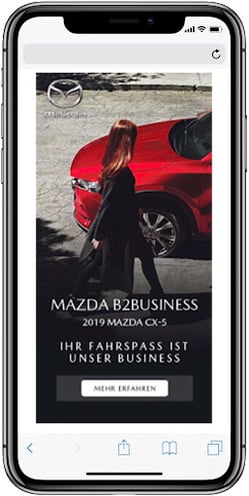 In 2019, Mazda Austria sought to maximize impact and exposure for their CX-5 model among business and enterprise target audiences. To achieve this, they collaborated with YOOSE, a marketing agency specializing in location-based strategies.
In 2019, Mazda Austria sought to maximize impact and exposure for their CX-5 model among business and enterprise target audiences. To achieve this, they collaborated with YOOSE, a marketing agency specializing in location-based strategies.
YOOSE employed a two-phase geofencing approach to drive foot traffic to Mazda's store. In the first phase, they created broad geofences around 156 co-working spaces and event venues to increase brand awareness. Following this initial phase, YOOSE implemented re-targeting, focusing on a smaller radius around the Mazda store to encourage visits from previously engaged users. Devices that came within 250 meters of the store were considered part of the foot traffic metric.
The campaign was a success, generating 1,118,000 impressions and achieving a 6.8% footfall rate, effectively increasing visibility and store visits for Mazda Austria's CX-5 model.
Conclusion
In conclusion, geofencing marketing is an effective strategy for businesses aiming to target potential customers within specific virtual boundaries. This approach is not only precise in reaching the desired audience, but also offers an affordable solution for advertising.
If you're interested in learning more about geofencing marketing and other location-based marketing strategies, feel free to reach out to YOOSE for a detailed discussion on how these techniques can benefit your business.


